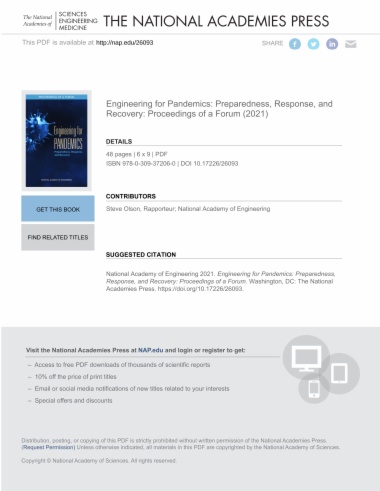

The 2020 Annual Meeting of the National Academy of Engineering took place under the most unusual circumstances in the Academy's 56-year history. In January 2020 the first few cases of a respiratory illness caused by a newly identified coronavirus were reported in the United States. By March, COVID-19 had become a global pandemic. As soon as the first few cases were reported, engineers began working wiith scientists, medical professionals, and others in the public and private sector to address needs generated by the pandemic. They brought automation, process control, and artificial intelligence to the production of protective equipment, diagnostics, and therapeutics. They established robust supply chains of critical materials. They strengthened the communication technologies and platforms that allowed people to telework and keep in touch with friends and family members.
The 2020 annual meeting was held virtually. The two main plenary presentations, delivered by David Walt, the Hansjörg Wyss Professor of Biologically Inspired Engineering at Harvard Medical School, and Pam Cheng, executive vice president of global operations and information technology for AstraZeneca, focused on the critical role of engineers in responding to the epidemic. Similarly, the annual forum, held the next day and organized by NAE executive officer Al Romig, Jr., and a distinguished organizing committee, was entitled "Engineering for Pandemics: Preparedness, Response, and Recovery". The plenary and forum presentations, which are summarized in this volume, abundantly demonstrate the essential functions that engineers have performed in responding to the virus. They also reveal the lessons derived from engineering that must be absorbed to prepare effectively for future pandemics and for other disasters, expected and unexpected, that will certainly occur in the future.